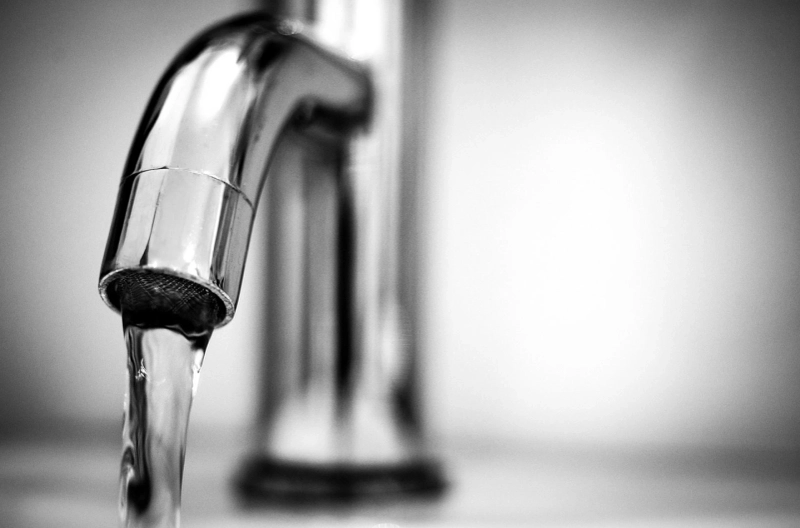Imagine this: you wake up dehydrated, ready to greet the day with a refreshing glass of water. You turn on the faucet, but only a sputtering cough escapes. Panic starts to rise – no water in the house? It can feel like a modern-day disaster. But before you resign yourself to a day of inconvenience (or worse, dehydration!), take a deep breath. Here's a guide to help you troubleshoot the situation “i don’t have water in my house” and get the water flowing again.
Is it Just You, or is it Everyone?
The first step is to determine the scope of the problem. Check all the faucets in your house, the kitchen sink, the bathroom taps, and the showerhead. If only one fixture is dry, the issue is likely isolated to that specific faucet or appliance. This could be due to a clogged aerator, a faulty cartridge, or a leak under the sink. DIY solutions might be possible (more on that later).
However, if the silence is universal across all your taps, it's a sign of a bigger issue affecting your entire plumbing system. This could be caused by several factors:
• Shutoff Valve Mishap: Your home has a main shut-off valve that controls the water supply entering the house. It's possible this valve was accidentally turned off, perhaps during maintenance or by someone unfamiliar with its function.
• Municipal Water Shortage: Sometimes, planned or unplanned water main breaks or maintenance can disrupt the water supply to an entire neighbourhood. Check with your neighbours or local water authority to see if there's a reported outage.
• Frozen Pipes: If you live in a region with freezing temperatures, your pipes could be frozen, preventing water from flowing.
• Well System Problems: If your home relies on a well for water, the well pump or pressure tank could be in trouble.
Taking Action: DIY Solutions and When to Call a Plumber
For isolated faucet problems, a little DIY might be the answer.
Here are some quick fixes you can try:
• Clogged Aerator: Most faucets have a small screen called an aerator at the tip. This can become clogged with mineral deposits, reducing water flow. Unscrew the aerator with a wrench and clean it under running water (if you have access to another source) or soak it in vinegar to dissolve mineral buildup.
• Replacing a Cartridge: Some faucets have replaceable cartridges that control water flow and temperature. If the cartridge is worn or damaged, you might be able to find a replacement at your local hardware store and follow the manufacturer's instructions for installation.
• Tightening Loose Connections: The connections under your sink can loosen over time, causing leaks and reduced water pressure. Carefully tighten any loose connections using an adjustable wrench, but be mindful of over-tightening, which can damage the pipes.
Important Note: If you're uncomfortable with any of these DIY fixes, or if they don't resolve the issue, don't hesitate to call a professional plumber. Attempting complex repairs without the proper knowledge and tools can worsen the problem and lead to costly damage.
Calling a plumber is the recommended course of action for problems affecting your entire home's water supply. Here's when to seek professional help:
• You suspect a frozen pipe: While some can thaw naturally with rising temperatures, others might burst, causing significant water damage. A plumber can safely locate and thaw frozen pipes to prevent this.
• If you can't locate the main shut-off valve, Don't dig blindly in your yard! A plumber can help you find the valve and ensure it's turned on properly.
• A leak in the main water line: Leaks can be tricky to identify and repair. A plumber will have the expertise and tools to locate and fix the leak efficiently.
• Your home has a well system: Issues with well pumps or pressure tanks require a qualified plumber with experience in well systems.
Beyond the Fix: The Value of Water Security
Having reliable access to clean water is a privilege we often take for granted. When the taps run dry, it's a stark reminder of how essential this resource is for our daily lives. Beyond the inconvenience of a disrupted shower or a thirst-quenching quest, a lack of water can impact hygiene, sanitation, and fire safety. Taking proactive steps to maintain your plumbing system and knowing how to respond to water emergencies are investments in your home's well-being and peace of mind.
Living with Less: The Resourceful Approach
While this article focuses on restoring water flow, there are situations where conservation becomes the priority. Planned water outages or water restrictions due to drought conditions might necessitate a temporary shift in how you use water.
Here are some tips for navigating these situations:
• Prioritize essential needs: Focus on using water for drinking, cooking, and sanitation.
• Shower power: Opt for shorter showers instead of baths.
• Dish duty: Continuously wash dishes in a full sink instead of running water.
• Laundry smarts: Wait for a full load before running the washing machine.
• Leak vigilance: Be extra vigilant about detecting and fixing even minor leaks to minimize water waste.
Conclusion: The Ripple Effect of Water
Water is the lifeblood of our homes and communities. By understanding your plumbing system, taking preventive measures, and using water wisely, you can ensure a steady flow for yourself and contribute to the larger conversation about water conservation. Remember, even small changes in individual water usage can have a significant collective impact. So, the next time you turn on the tap and hear the satisfying rush of water, take a moment to appreciate this precious resource. After all, a little knowledge and a few proactive steps can go a long way in keeping the water flowing smoothly in your home.
Read the full article: https://writeupcafe.com/



